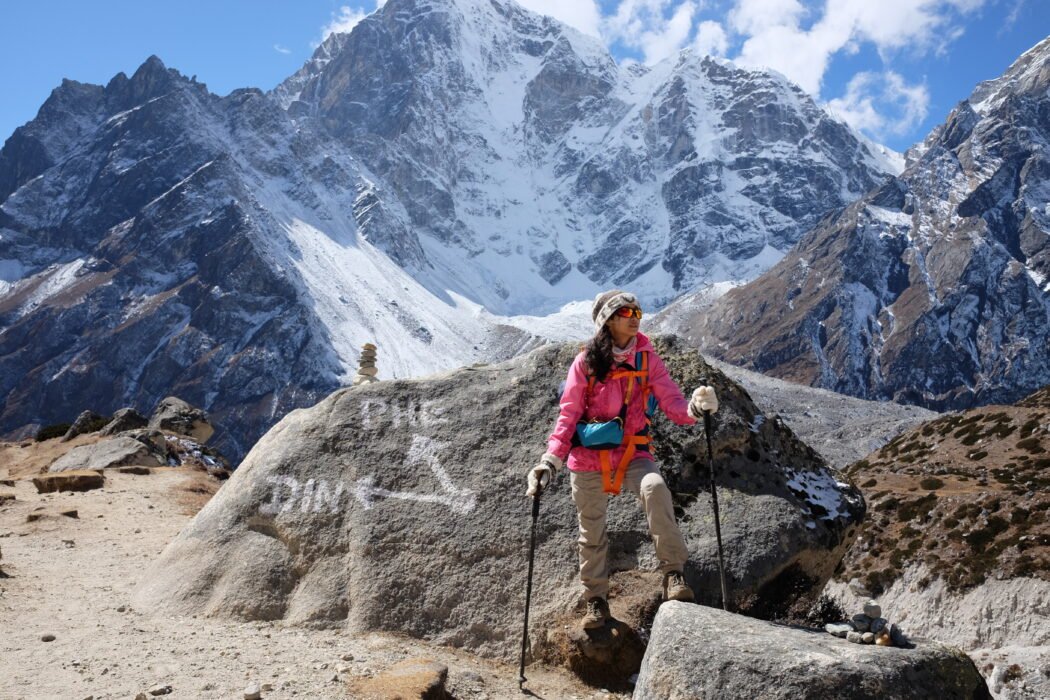Share This:

7 Most Important Things to Know Before Everest Base Camp Trek
Nepal is one of the world’s leading destinations for first-time and experienced trekkers as, among 14 mountains above 8000 meters, Nepal is home for 8 of them. So, you’ll be treated with great views of snow-capped mountains. The regions and sites in Nepal are full of adventures, for spiritual trekkers, adventure seekers, and nature lovers. In Khumbu Region of Nepal, there lies elegance and mighty mountain Everest, at an altitude of 8,848 meters. With no doubt, Everest Base Camp Trek is one of the most famous trekking in the world. Together with the beauty of the Himalayas, it is culturally tempting for the trekkers. There are some things to know before Everest Base Camp Trek which may help you in the journey.
Thousands of trekkers around the world trek to the Everest each year and few climbers make it to the summit. For the beginner trekkers, we recommend being in good health with average physical fitness. The trek followed up by walk up and down the Sherpa bazaars, winding paths, high altitude views of Buddhist monasteries and the famous Everest viewing point of Kala Patthar (5,545m); from where you can admire the panoramic views of Everest and the other Himalayas. Depend on the difficulty, the number of days for trekking, budget and trek style here we have listed 7 most important Things to Know Before Everest Base Camp Trek.
Things to Know Before Everest Base Camp Trek
1. Permits for Everest Base Camp Trek
First things to know before Everest Base Camp Trek is about permits. Yes, you need to have permits to trek to Everest Base Camp and you need 2 permits for trekking to Everest Base Camp. If you are booking Everest base camp trek through a registered local trekking agency, like Mountain treks Nepal then, they’ll arrange these permits for you.
- Sagarmatha National Park permit:
This permit can be obtained from the entry point of the Sagarmatha National park or at Tourist Service Center, Bhrikutimandap, Kathmandu.
- Trekkers Information Management System (TIMS Card)
TIMS cards can be obtained from the offices of Nepal Tourism Board in Kathmandu and Pokhara. If you are trekking through an agency you need to obtain organized TIMS card. If you are trekking independent then you need to obtain an Individual TIMS card. The new local permit system is enforced and it can be obtained in Lukla.
Necessary Documents
Two copy of passport size pictures
Form with necessary details
- Additional Gaurishankar National Park Entry Permit for Jiri to Everest Base Camp Trek
You need to have Gaurishankar Conservation Area Project Permit if you are starting the trek from Jiri. It can be purchased in Kathmandu. For individual trekkers, you need to pay double if you issue permits at Shivalaya, the town next to Jiri. Two passport sized photographs are needed for this permit.
2. Which is the best season for Everest Base Camp trekking?
Best Season for Everest Base Camp trekking may depend on the experience you are looking to have. Spring (February, March, April, and May) & Autumn (late September, October, November, and December) is the most suitable seasons to trek to Everest Base Camp. If you are mentally and physically strong you can explore Everest Base Camp in any other seasons. Mountain Treks Nepal welcome you any time of the year.
Trekking in January and early February is possible, but snow can dump the trail and the temperature is very cold higher up (-20C/-4F to – 30C/-22F). Weather conditions can be more demanding in these winter months. Due to weather condition, the flight may delay so you might need more days than you plan for. Late September, October, and November will provide spectacular and clearer views of the mountains, less heat haze.
3. Difficulty Level
Trekking to Everest Base Camp is not to be taken lightly cause throughout the treks, you will gain 500m to 700m which require 6 to 8 hours of elevation per day. It has a moderate trip grading. It could be difficult to reach certain elevations in just a couple of days if you have not experienced any high altitude trek in your life. The main problem is Acute mountain sickness due to high altitude, as the terrain is obviously mountainous.
The beginner trekkers may find it much difficult so we recommend being in good health with average physical fitness. The maximum height we will reach during the trek is 5360m of Everest Base Camp and 5555m for Kala Patthar. Expert guides from Mountain Treks Nepal will always be here to help you with sufficient acclimatization time.
4. Packing List for Everest Base Camp Trek
There are a few accessories that you need to take with yourself during your trekking to Everest Base Camp. Trekker who is planning the trek for the first time might think Everest Base camp as Climbing the high mountain but it isn’t so you don’t need climbing ropes, Ice ax, climbing shoes or crampon. The following items could provide you with basic requirements:
- Hiking boot (high ankle boot recommended)
- Sleeping bag (not necessary but recommended to have one)
- Down Jacket
- Extra pair of clothing
- A pair of wool, fleece or gore-tex gloves
- Extra warm clothing, layered clothing – thermals, during winter (December to March) trek.
- Windproof and waterproof jacket and pants
- Pair of easy dry hiking pants
- Hiking socks (thick and it should give enough warm)
- Hiking bag
Additionally, you could consider taking, Sunglasses, Warm hat/sun hat, Few pairs of extra socks, scarf, wet wipes, Torchlight, lip guard, sun cream, trekking pole, water bottle (minimum 1-liter capacity), water purification drop, first aid kit, camera accessory etc. It is always better to consult with your Trekking company for the recommended kit list for the season you are trekking in.
5. The options for hiking – group or solo, guided or not
Planning the perfect travel adventure involves making a lot of choices. You have to choose the best thing to do so that choices about how to hike is best things to know before Everest Base Camp Trek. Traveling alone in high mountain requires a lot of skills, it is possible for those with high altitude experience. Thus, if you are a beginner trekker then traveling with a group can be a great way to ease into the Everest Base Camp. Rather than being in doubt and asking the question like ‘what if’, we always recommend to trek with a guide.
Just in case if you end up suffering from altitude sickness, at a higher altitude you will be hugely grateful for the experience and professional way of tackling the problem through good guides. Also, the guides can really deepen your knowledge of the place. Plus, Hiring a guide means you don’t have to worry about finding a teahouse.
6. Carrying Nepali Currency is a Most
There are no ATMs on the trail to Everest Base Camp, so bringing cash from Kathmandu is a must. Though, Money Exchange offices are very common in tourist areas; Currency exchanges on the trail offer an increase in the rates so it’s best to carry the local currency (Nepali Rupees).
It’s better to seek advice from the company you trek, on how much you should bring as this depends on how you’ve agreed to payments and how long your trip is for.
7. Choose an experienced company to guide your trek
There is no doubt that making a trip from good company assists your experience way better while you are in Nepal Himalayas. First and foremost important element is to verify the company is legally operated or not. Going with an experienced company is really an open door for voyagers since they know your need and thus provide the best service. And if you choose best company then they will guide on things to know before Everest Base Camp Trek.
Planning a trip to Everest Base camp and don’t know what to do?
Are you planning a trek to Everest Base Camp? Tell us about it and what you expect from it. Join us to live a life with full of adventure, entertainment and to collect many memories. Also, we will tell about Things to Know Before Everest Base Camp Trek Send us an inquiry email and we will help you decide on a trip with a comfortable itinerary.
